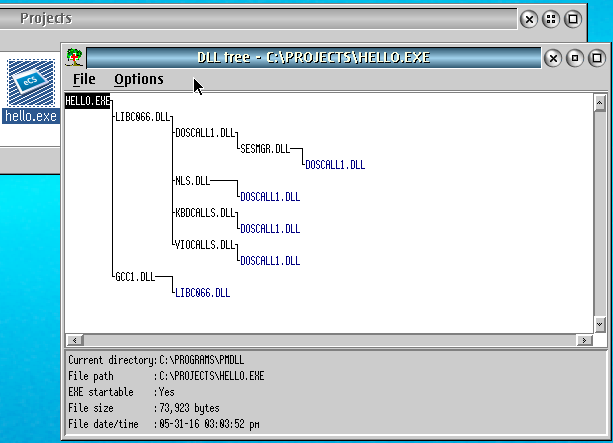The Quick and Dirty "Hello World" with GCC: Difference between revisions
Appearance
No edit summary |
No edit summary |
||
| Line 21: | Line 21: | ||
gcc -o hello.exe hello.c | gcc -o hello.exe hello.c | ||
The -o file parameter of gcc it is just to place the output of the compile into an specific file name. | |||
It will generate a "hello.exe" file. | It will generate a "hello.exe" file. | ||
| Line 26: | Line 28: | ||
When you run it you will see: | When you run it you will see: | ||
[[image:Hellocmd.png| | [[image:Hellocmd.png|300px]] | ||
Let's also check out with [[PMDLL]] which DLLs are associated to this new created hello.exe. | |||
[[Image:HelloC-PMDLL.png]] | |||
It can not be more simple. | |||
[[Category:Languages Articles]] | [[Category:Languages Articles]] | ||
Revision as of 22:21, 31 May 2016
I just wanted to check out which will be the most basic example to use the gcc compiler to create on OS/2-eCS the most basic, most easy program on earth, the "Hello World" program.
First I installed with Arca Noae Package Manager the gcc compiler.
I created a simple text file called "hello.c" and included on it.
/* Hello World program */
#include<stdio.h>
main()
{
printf("Hello World");
}
The most simple program on C to print out "Hello World" on the command prompt.
To compile it is as simple as:
gcc -o hello.exe hello.c
The -o file parameter of gcc it is just to place the output of the compile into an specific file name.
It will generate a "hello.exe" file.
When you run it you will see:
Let's also check out with PMDLL which DLLs are associated to this new created hello.exe.
It can not be more simple.

